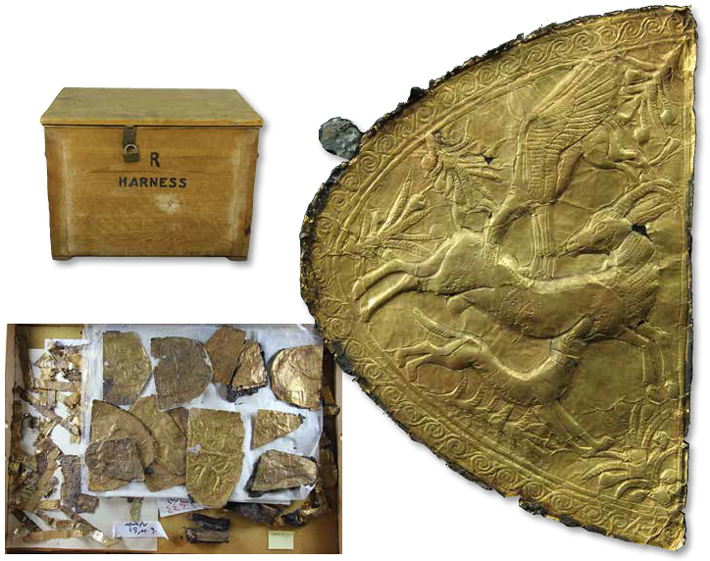https://www.archaeology.org/issues/291-1803/trenches/6351-trenches-egypt-tutankhamun
Tut's Mesopotamian Side
Monday, February 12, 2018

Clockwise from top left: wooden box, embossed gold sheet, and gold fragments
Although the treasure of the Egyptian pharaoh Tutankhamun's grave, one of the most famous archaeological discoveries of all time, was found nearly 100 years ago, researchers are still learning new things about ancient Egyptian society by studying the grave assemblage. In 1922, British archaeologist Howard Carter uncovered the lavish 3,300-year-old tomb in the Valley of the Kings. Now, a German-Egyptian project has analyzed hundreds of embossed decorative gold items from the grave for the first time. The fragmented gold pieces were boxed up shortly after they had been discovered and remained in museum storage until recently.
Experts have painstakingly reassembled the ornamental applications, which would have been attached to objects in the pharaoh's tomb, such as quivers, bow cases, and bridles. They were surprised to detect decorative motifs foreign to Egyptian art at the time. Scenes such as fighting animals and goats at the tree of life were typical of Mesopotamian art, and their presence on the objects from Tutankhamun's grave demonstrates how Egyptian artists were cognizant of and influenced by outside cultural styles that had seemingly passed to Egypt through the Levant. Although chemical analyses of the gold artifacts with Egyptian motifs and those with foreign motifs showed that they had different chemical compositions and sources, it is not thought that the eastern-style objects were imported. Instead, they were likely created in workshops specializing in Mesopotamian styles.
-- Sent from my Linux system.
No comments:
Post a Comment